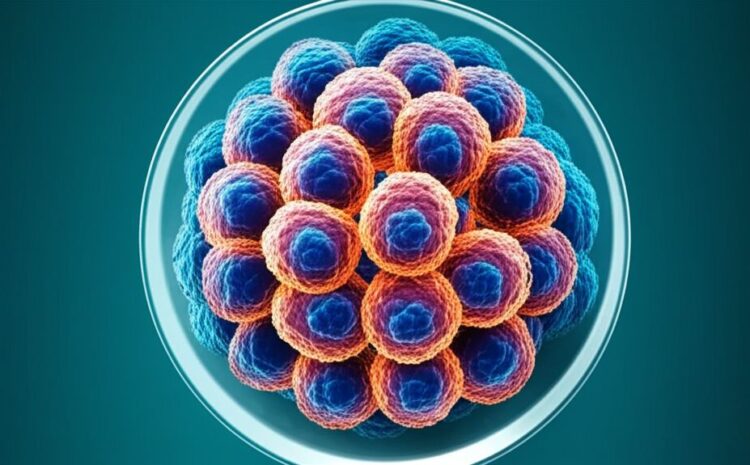Unleashing the Power of Organoids: Revolutionizing Preclinical Research

Preclinical research, the cornerstone of drug development and disease understanding, has long relied on traditional in vitro (cell culture) and in vivo (animal models) systems. While these models have provided invaluable insights, they often fall short in recapitulating the complex microenvironment and cellular interactions found within the human body. This limitation can lead to discrepancies between preclinical findings and clinical outcomes, resulting in costly failures and delays in bringing novel therapies to patients.
However, a groundbreaking technology is emerging to bridge this gap: organoids. These three-dimensional (3D) in vitro cultures, derived from stem cells or primary tissues, self-organize into structures that closely resemble the architecture and function of their in vivo counterparts. Organoids represent a significant leap forward in preclinical research, offering unprecedented opportunities to study human biology and disease in a more physiologically relevant context.
The Rise of Organoid Technology
The ability to grow and maintain complex 3D tissue structures in the lab has revolutionized how scientists approach preclinical studies. Organoids can be generated from a variety of tissues, including the brain, intestine, liver, kidney, lung, and tumors. This versatility allows researchers to create disease-specific models that faithfully mimic the genetic and phenotypic characteristics of human conditions.
One of the most exciting aspects of organoid technology is its potential to personalize medicine. Patient-derived organoids can be generated from small tissue biopsies, providing a unique platform to study an individual’s disease at a cellular level. This opens doors for tailored drug testing, allowing clinicians to predict which therapies are most likely to be effective for a specific patient before administration.
Latest Applications in Preclinical Research
The applications of organoids in preclinical research are rapidly expanding. Here are some of the latest advancements:
1. Drug Discovery and Development: Organoids offer a more predictive platform for evaluating drug efficacy and toxicity compared to traditional 2D cell cultures. Their 3D structure allows for better drug penetration and more accurately reflects the complex cellular interactions within tissues. Researchers are using organoids to screen large libraries of compounds, identify novel drug targets, and optimize drug delivery strategies. Furthermore, organoids can help to identify potential off-target effects and predict patient responses to treatment, ultimately increasing the success rate of clinical trials.
2. Disease Modeling: Organoids provide an invaluable tool for studying the pathogenesis of various diseases, including cancer, infectious diseases, and genetic disorders. By manipulating the genetic makeup or environmental conditions of organoids, scientists can dissect the underlying mechanisms of disease development and progression. For instance, researchers have used patient-derived tumor organoids to study cancer evolution, drug resistance mechanisms, and the tumor microenvironment. Similarly, organoids can be infected with pathogens to investigate host-pathogen interactions and evaluate the efficacy of antiviral or antibacterial therapies.
3. Toxicology and Safety Testing: Organoids offer a more ethical and physiologically relevant alternative to animal models for assessing the safety of drugs and other chemicals. By exposing organoids to different compounds, researchers can evaluate their potential to cause organ damage or other adverse effects. This approach has the potential to reduce the reliance on animal testing while providing more human-relevant data.
4. Regenerative Medicine and Transplantation: Organoids hold immense promise for regenerative medicine. Researchers are exploring the possibility of using lab-grown organoids to repair damaged tissues or even replace entire organs in the future. Significant progress has been made in generating functional organoids, such as liver buds and intestinal organoids, which exhibit key characteristics of their native counterparts. While transplantation of human organoids is still in its early stages, it represents a potentially transformative approach for treating organ failure and other debilitating conditions.
5. Understanding Fundamental Biology: Beyond disease-focused research, organoids are also proving to be powerful tools for studying fundamental aspects of human biology, such as tissue development, cell differentiation, and stem cell behavior. Their ability to self-organize into complex structures provides a unique window into the intricate processes that govern tissue formation and function.
Challenges and Future Directions
Despite the remarkable progress in organoid technology, several challenges remain. Standardizing organoid culture protocols, ensuring reproducibility, and achieving vascularization (the development of blood vessels within organoids) are key areas that require further research and development. Additionally, integrating organoid technology with other advanced techniques, such as microfluidics and CRISPR-Cas9 gene editing, will further enhance their utility in preclinical research.
In conclusion, organoids represent a paradigm shift in preclinical research. Their ability to mimic the complexity of human tissues and diseases offers unprecedented opportunities for drug discovery, disease modeling, toxicology testing, and regenerative medicine. As the technology continues to evolve, organoids are poised to play an increasingly vital role in accelerating the translation of scientific discoveries into effective therapies for a wide range of human diseases, ultimately benefiting patients in Lahore, Pakistan, and across the globe.